- Get link
- X
- Other Apps

The entrepreneur, playboy, philanthropist Ilon Mask, eccentric in the good sense of the word, is known throughout the world. It was he who decided to bring mankind into space, colonize Mars, abandon disposable missiles. He decided to make the world cleaner by transplanting us from cars with ICE to self-driving cars. While these enterprises unfold, he does not sit with folded arms. He conceived Neuralink, which will help us become new people. Without borders and without weaknesses, as it should be in the new world (Ilona Mask).
To document crazy ideas Mask, as always, volunteered with Tim Urban from WaitButWhy (he wrote about artificial intelligence, colonization of Mars and SpaceX). Introducing one of the best works of modern popular science journalism. Further from the first person.
Part 1: The Colossus of Man
Part 2: The Brain
Part 3: Flying over the neuron nest
Part 4: Neurocomputer Interfaces
Part 5: The Neuralink Task
Part 6: The Age of Wizards
Part 7: The Great Merger
I had a telephone conversation last month.
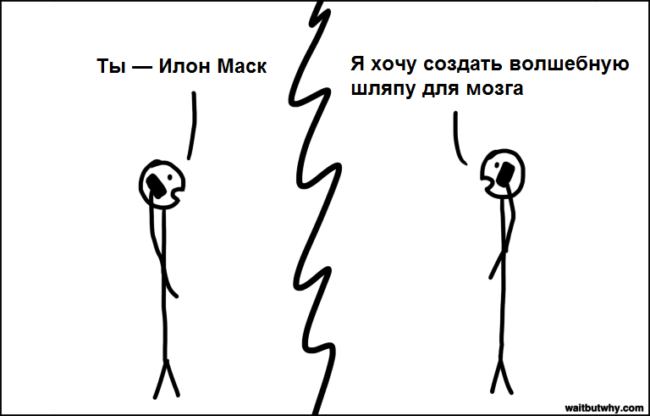
Okay, maybe it wasn’t all right and the words weren’t quite like that. But after I learned that Ilon Musk decided to create a new company, I began to understand that he could conceive of his plans in the same way.
When I wrote about Tesla and SpaceX, I found out that one can only fully understand the activities of some companies by zooming in and out, inside and out. From the inside - technical problems faced by engineers, from the outside - existential problems faced by our kind. From the inside - to see the world, how it is now, outside - to see a great history of how we have reached this moment and what the distant future can be.
New enterprise Ilona - Neuralink - not only the same thing, six weeks after the first acquaintance with the company, I am convinced that she somehow manages to outshine Tesla and SpaceX, both in the courage of engineering initiatives and in the greatness of her mission. Two other companies are seeking to redefine what the people of the future will do. Neuralink seeks to redefine who the people of the future will be .
The dizzying span of the Neuralink mission in conjunction with a maze of incredible complexity of the human brain is very difficult to comprehend. But when I thought about it, when I spent enough time zooming in and away, I realized that this was the coolest thing I saw . I think I took a time machine, went to the future and came back to tell you: guys, this is even weirder than we thought.
But before I take you to my time machine to show what I found, we need to get into a magnifying machine. Because, as I understand it, the plan for a “foil hat”, or a wizard's hat, Ilona Mask is difficult to understand right away.
So get ready to forget everything that your brain knows about itself and its future, fall on the couch and drive into the wormhole.
Part 1. Colossus of Man
600 million years ago, nobody did anything at all.
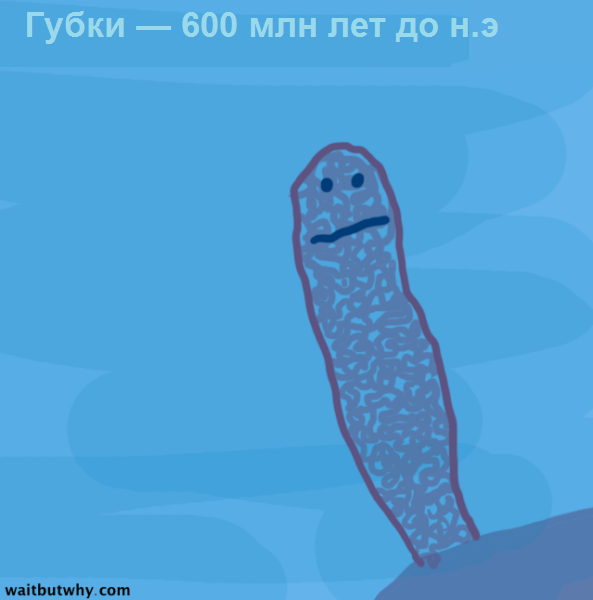
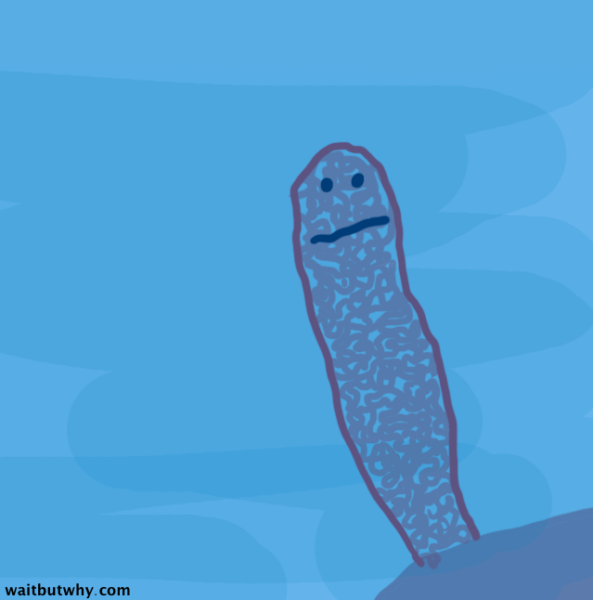
The problem is that no one had any nerves. Without nerves you cannot move or think, process all sorts of information. It remains just to exist a little bit and wait until you die.
But then the jellyfish appeared.
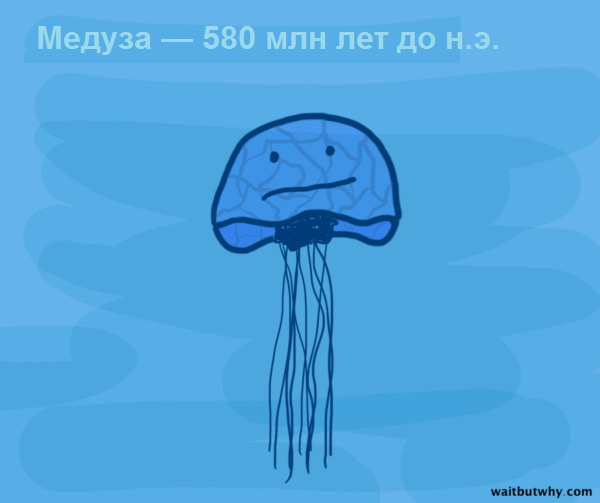
These jellyfish were the first animals that realized that the nerves were necessary to understand what they were, and got the first nervous system - a network of nerves.

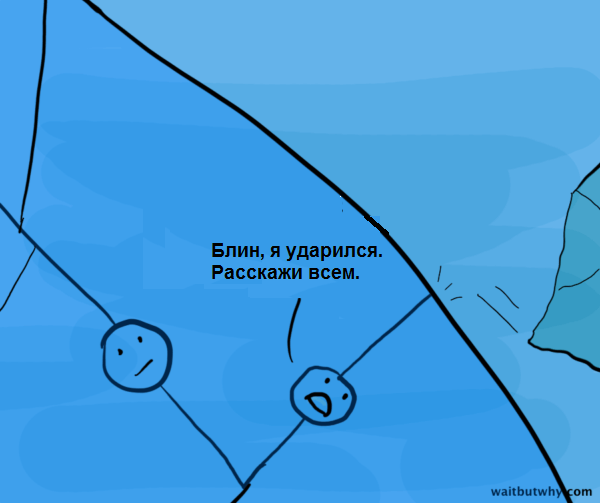
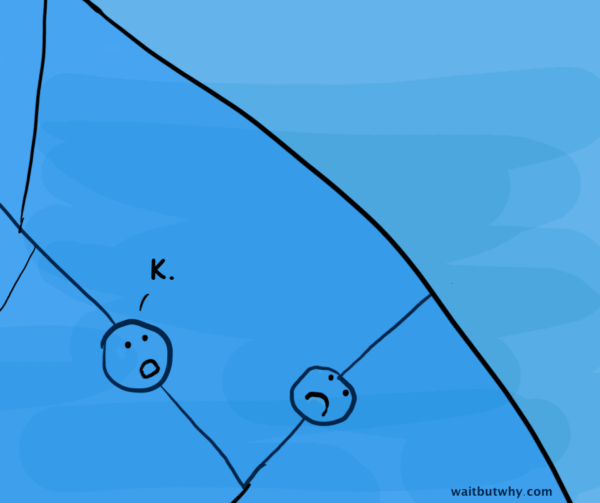
The nervous network of jellyfish allowed them to gather important information about the world around them - for example, where objects are, where predators are, where food is, and to transmit this information, like through a large social network, to all parts of the body. The ability to receive and process information meant that the jellyfish could actually react to changes in their environment in order to increase the chances of a quality life, rather than squander aimlessly in the hope of the best.
A little later, a new animal appeared that had an even cooler idea.
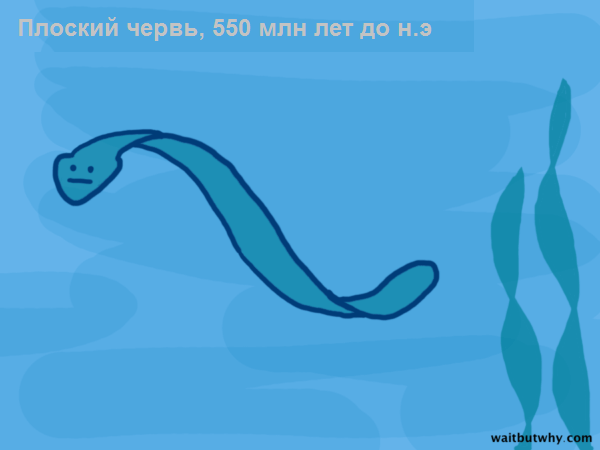
The flatworm found out that much more could have been done if someone in the nervous system was in charge of everything — like the boss of the nervous system. This boss lived in the head of a flatworm and ran the whole nervous system of the body so that it would transmit all the new information directly to him. So instead of organizing itself into a network form, the flatworm's nervous system collapsed into a central channel of nerves that sent information back and forth between the boss and everything else:
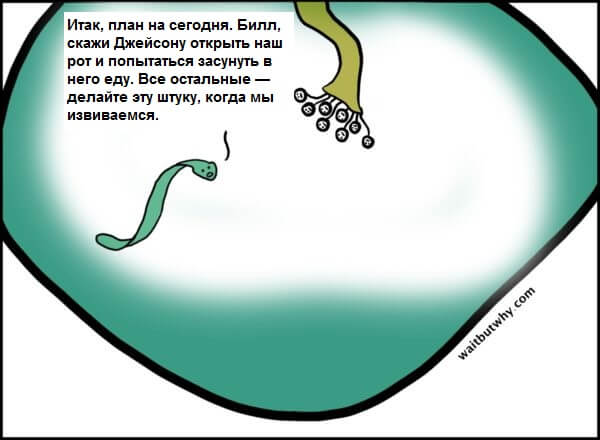
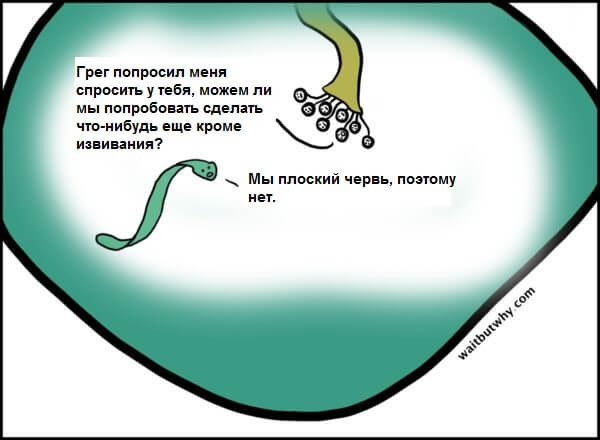
The flatworm's boss-channel system was the world's first central nervous system, and the boss in the flatworm's head was the world's first brain.
The idea of a boss in the nervous system was quickly picked up by everyone else, and soon thousands of species with brains appeared on Earth.
Time passed, and the animals of the Earth began to invent complex and new systems of the body, so the bosses became more and more busy.
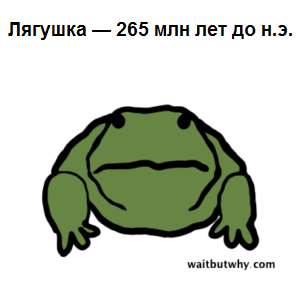
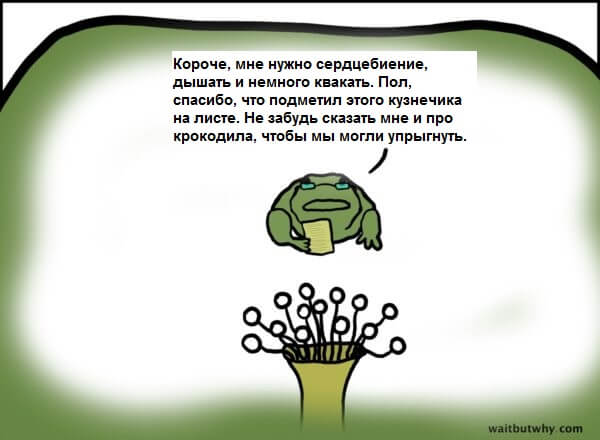
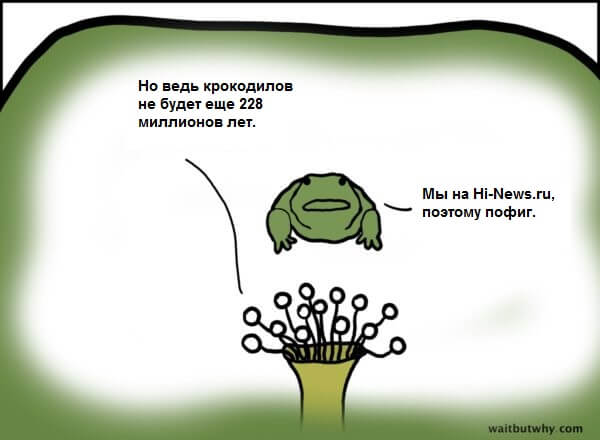
Mammals arrived a little later. For these millennials of the animal kingdom, life was already difficult. Yes, their hearts had to beat, and their lungs breathed, but the mammals wanted more than just to survive - they got complicated feelings, such as love, anger, and fear.
For the reptile brain, which until now had to deal only with reptiles and other creatures simpler, the mammals were just ... something more. Therefore, the mammals have a second boss who began to work in tandem with the brain of reptiles and took care of all these new needs. Thus, the world's first limbic system appeared.
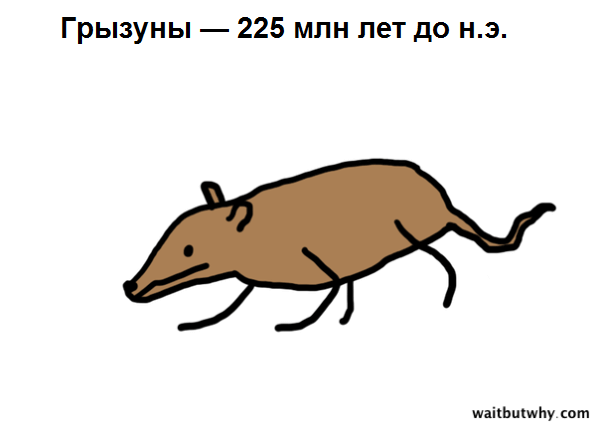
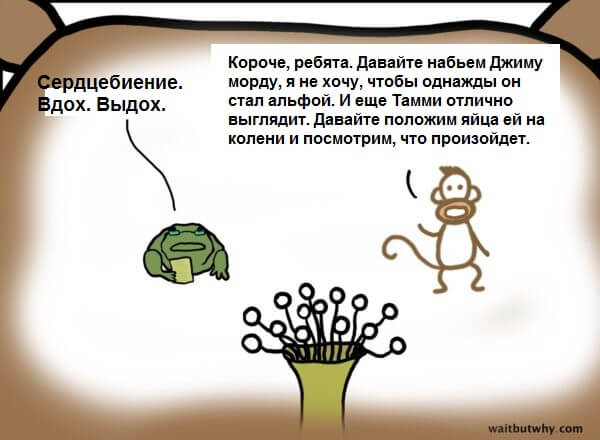
Over the next 100 million years, the life of mammals became more and more complex and saturated, and one day two bosses found a new resident in his office.
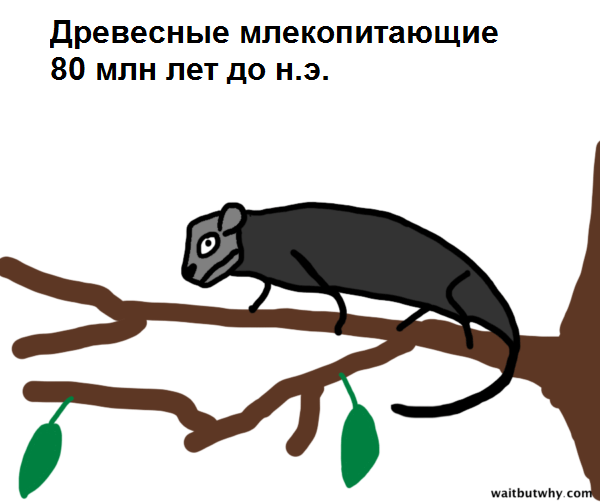
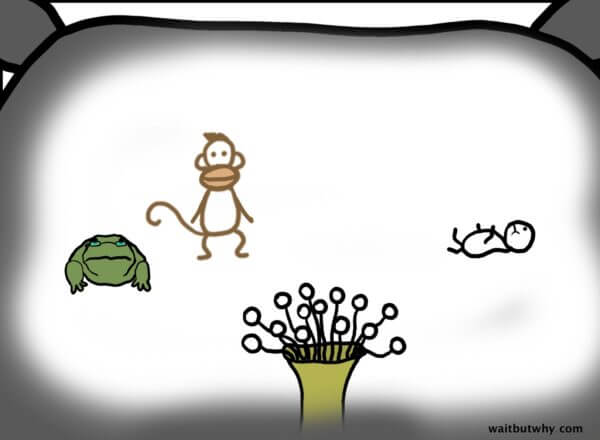
What initially seemed like a random baby was actually an early version of the neocortex, and although at first he spoke very little, along with the advent of primates and then big monkeys and first hominids, this new boss grew from a baby to a child, and then a teenager with your idea of how things should work.

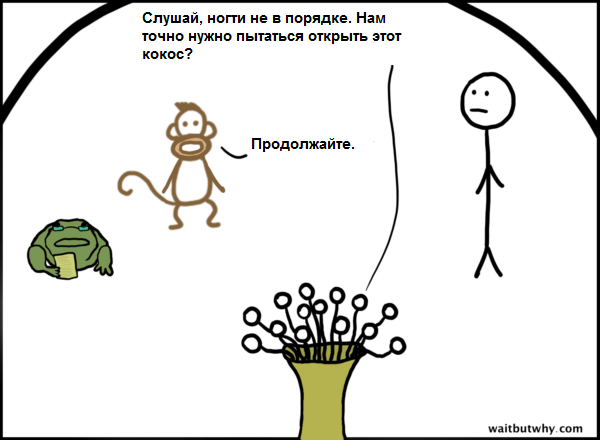
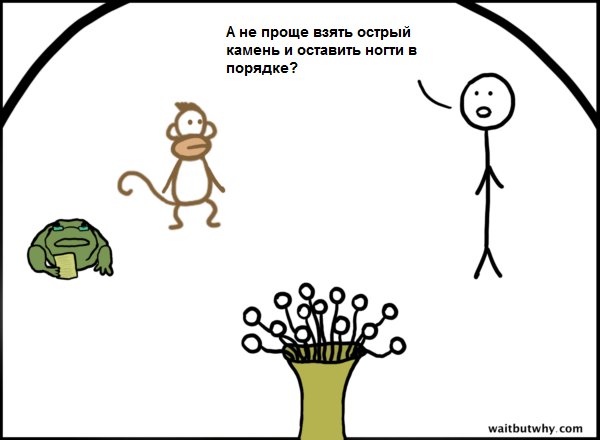
The ideas of the new boss turned out to be very useful, and under his leadership the hominids learned how to create tools, hunting strategies, and cooperation with other hominids.
Over the next several million years, the new boss grew older and wiser, and his ideas were constantly improving. He understood how to get rid of nudity. He understood how to control the fire. He learned to make spears.
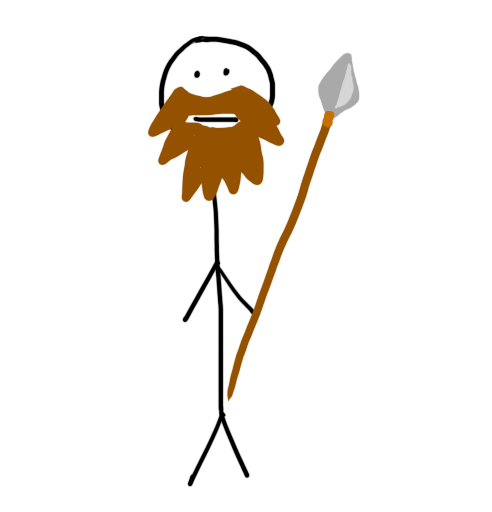
But the coolest trick was thinking . He turned each person’s head into a small world-in-itself, making people the first animals who can comprehend complex thoughts, reason and come to decisions, and make long-term plans.
And then, about 100,000 years ago, there was a breakthrough.

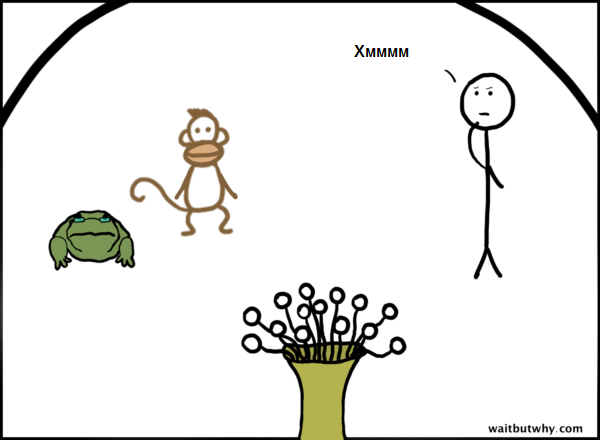
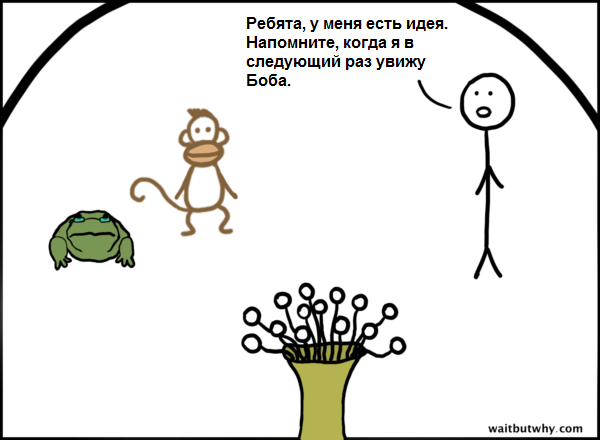
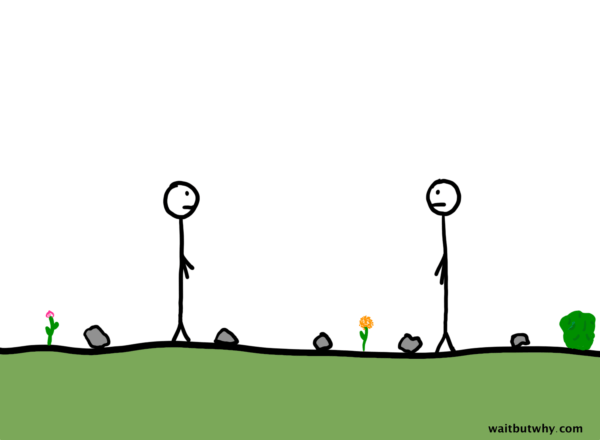
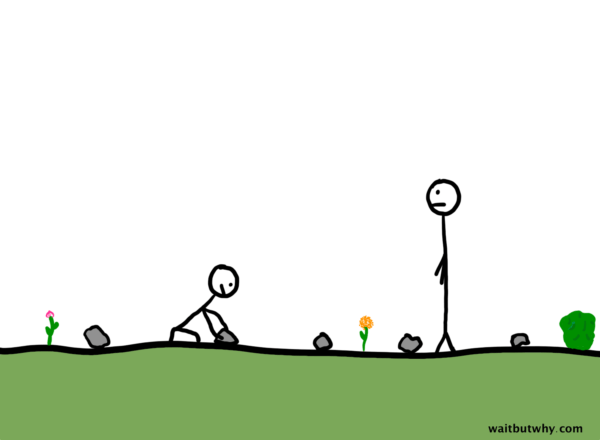

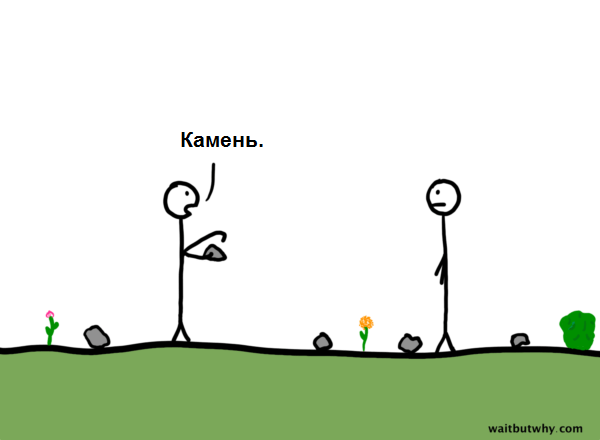



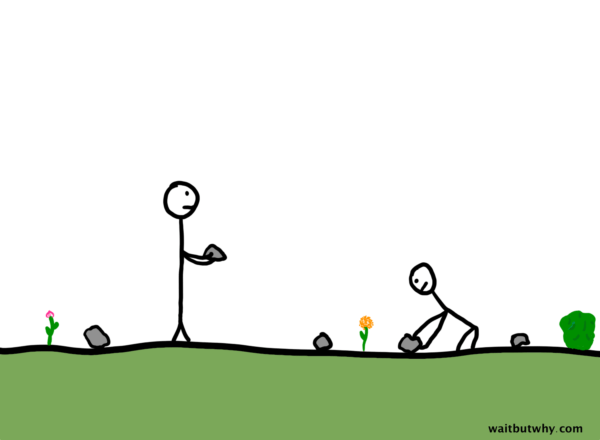
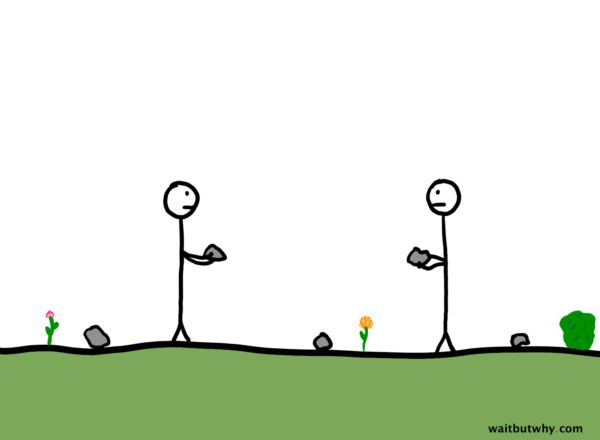
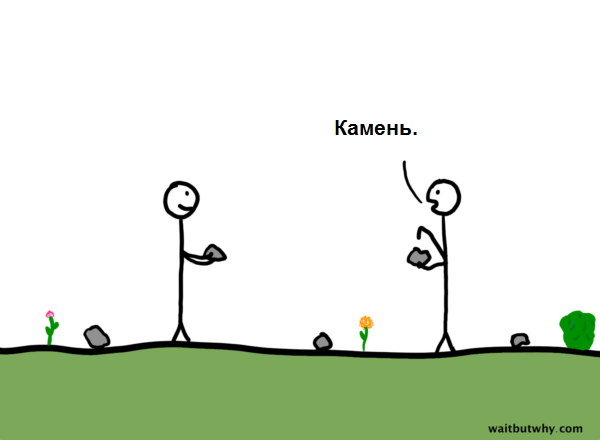
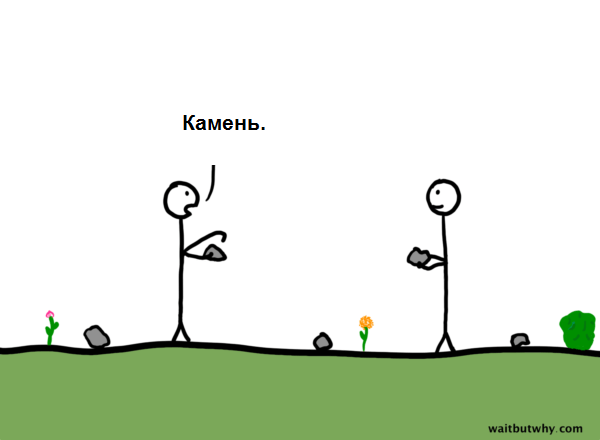
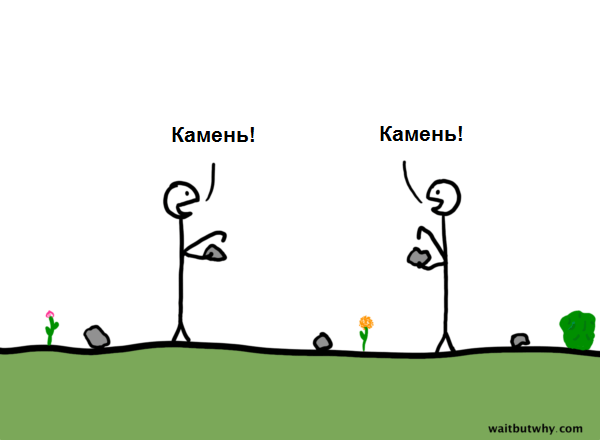
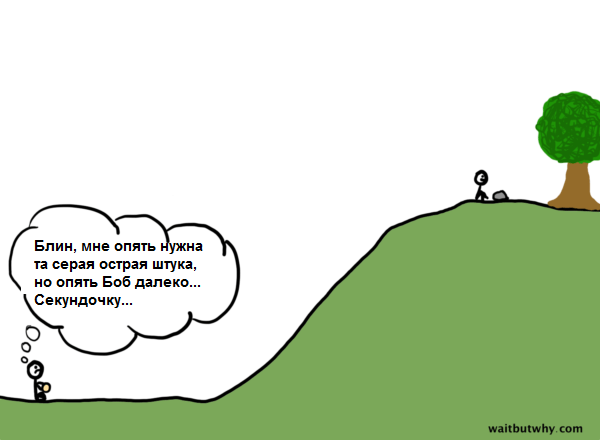

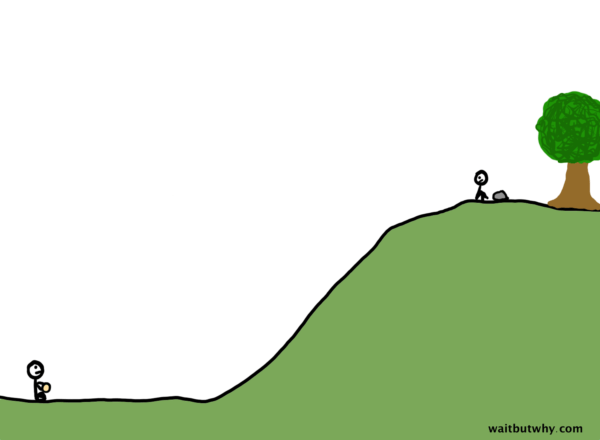
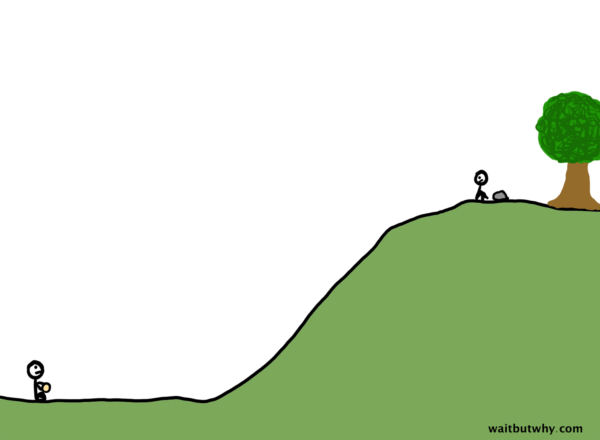
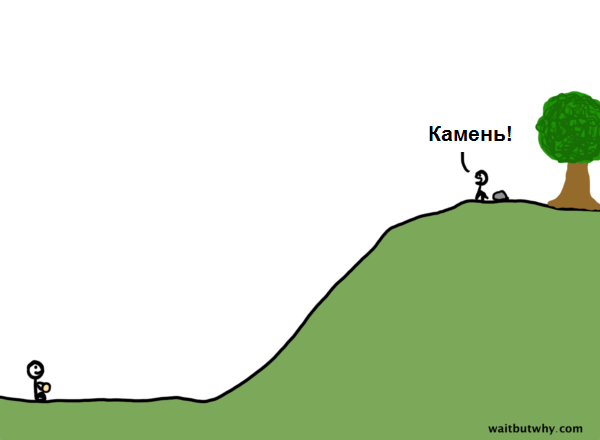
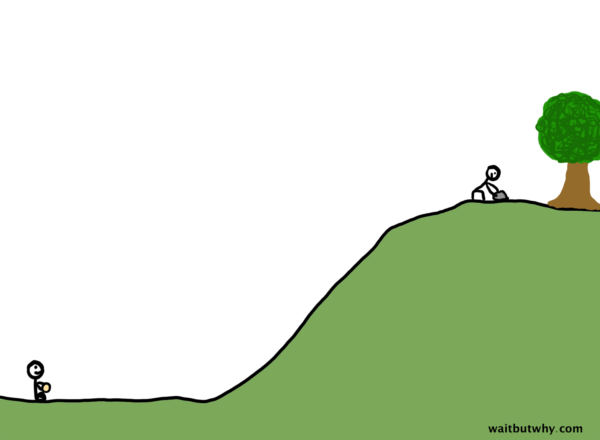
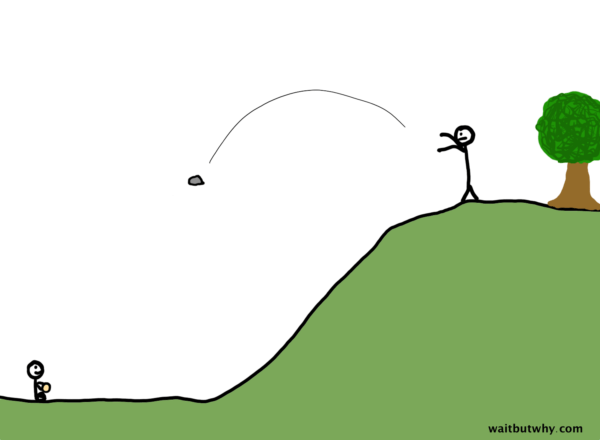
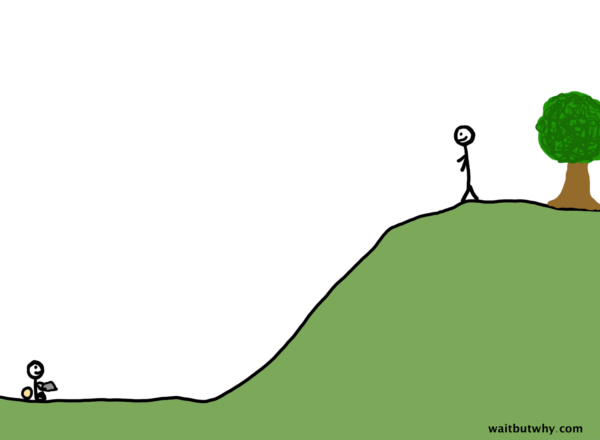
The human brain developed to the point when it began to understand that the sound “stone” was not a stone in itself , but it could be used as a symbol of a stone - by this sound the stone was meant . The first man invented the language.
Very soon, words appeared for all sorts of things, and by 50,000 BC, people were already communicating in a complete, complex language with each other.
Neocortex turned people into magicians. Not only did he make the human head a wonderful inner ocean of complex thoughts, his last breakthrough found a way to translate these thoughts into a symbolic set of sounds and send them to vibrate through the air into the heads of other people who could decode these sounds and absorb their own ideas ocean of thoughts. The human neocortex has been thinking about things for a long time - and now, finally, he had someone to discuss them with.
A party of the neocortex gathered. The neocortexes — well, for the present, the neocorticles — shared with each other everything they could: stories from the past, funny jokes, opinions formed, plans for the future.
But the most useful was to share everything that I learned. If one person learned through trial and error, that a certain kind of berries turns life for 48 hours into continuous diarrhea, he could use his tongue to tell about his difficult life lesson to the rest of his tribe. Tribal members can use language to pass this lesson to their children, and their children to their children. Instead of different people repeating the same mistake from time to time, one of them can say “do not eat these berries”, and his wisdom will pierce space and time, protecting everyone from bad experiences.
The same thing will happen when one person comes up with some new tricky trick. One extraordinarily intelligent hunter, a lover of observing the constellations of the stars and the annual migration patterns of flocks of wild animals, could share a system he developed that uses the night sky to determine exactly how many days are left before the flock returns. And although some hunters could come to the creation of such a system on their own, if you pass it from mouth to mouth, all future hunters in the tribe will be able to use the ingenious discovery of their ancestor. And in the future this discovery will be the first starting point in the body of knowledge of a hunter.
Suppose that this spread of knowledge will make the hunting season more efficient and give tribal members more time to work on their weapons, which will allow one brilliant hunter to find a way to make lighter and more durable copies that you can throw more accurately over several generations. In the same way, from now on, every hunter of the future and the present in the tribe will hunt with a more effective spear.
The language allows the best insights of the most intelligent people to be transmitted through the generations, accumulating into the small collective turret of the knowledge of the tribe - the “greatest hits” among the best moments of inspiration of their ancestors. Each new generation will receive this turret built in their heads as a starting point for life, and it will lead them to even steeper discoveries based on the knowledge of their ancestors. The wisdom of the tribe will grow and spread. Language is the difference between this:
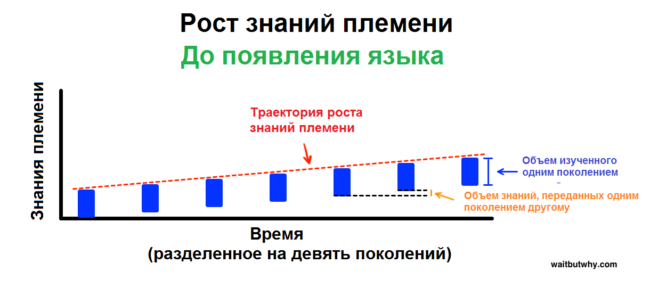
And this:

The main improvement of the trajectory occurs for two reasons. Each generation can learn much more new when everyone is talking to each other, comparing notes and combining their individual knowledge (therefore, in the second chart, the blue bars are much higher). And each generation can successfully pass a high percentage of their knowledge to the next generation, so knowledge is better preserved over time.
Shared knowledge becomes like a great, collective collaboration between generations. Through hundreds of generations, what began with the professional advice on a particular berry and how best to avoid it will become a complex system of growing long rows with bushes of pleasant for the stomach berries and their annual collection. The initial glimpse of genius regarding the migration of wild animals will turn into a system for raising domestic sheep. Innovation with a spear will pass through hundreds of changes over tens of thousands of years and become a bow and arrow.
Language gives a group of people a collective mind that far exceeds the individual human intellect and allows each person to benefit from the collective mind, as if he himself had invented it all. We consider the bow and arrow of primitive technology, but if Einstein is to grow in the forest without any knowledge and order him to make the best hunting device that he can do, he will not even give you a bow and arrow. Only a collective human movement can handle it.
The ability to talk with each other also allowed people to create complex social structures that, along with advanced technologies such as farming and the domestication of animals, eventually led to the fact that the tribes began to settle in permanent places and merge into organized super-tribes. When this happened, the tower of the accumulated knowledge of each tribe became a super tower. Mass cooperation improved the quality of life for all, and by 10 000 BC the first cities had been formed.
According to Wikipedia, there is the so-called Metcalf law, according to which "the value of a telecommunications network is proportional to the square of the number of users connected to the system." And it is illustrated with this little chart of old phones.
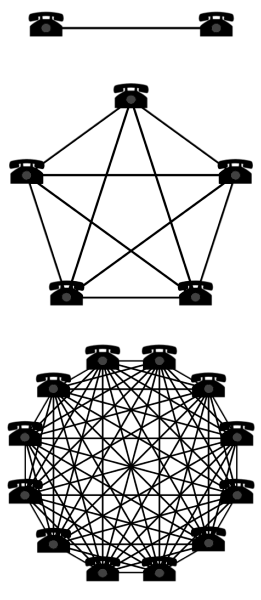
And the same idea applies to people. Two people can lead one conversation. Three people can create four unique chat groups. Five people - 26 conversations. Twenty people - 1,048,554.
Thus, city members not only benefit from a huge tower of knowledge as a foundation, but based on Metcalf's law, the number of possible conversations soars to an unprecedented amount of diversity. More talk meant the emergence of new ideas that are facing each other, new discoveries and the take-off of innovation.
Soon, people took over agriculture, it freed many people, and they thought about other things to do. After that there was another giant breakthrough: the letter.
Historians believe that people began to write all sorts of things about 5-6 thousand years ago. Up to this point, the collective tower of knowledge was stored only in the network of people's memories and was transmitted exclusively from mouth to mouth. This system worked in small tribes, but when there was a much larger amount of knowledge that large groups of people shared among themselves, only the memories could not support all this, and most of them disappeared.
If a language allows people to send thoughts from one brain to another, writing allows them to place thoughts on physical objects, such as a stone, where they can live forever. When people began to write on thin sheets of parchment or paper, huge areas of knowledge that would require a week to pass from mouth to mouth could be squeezed into a book or scroll and taken into hand. The tower of people's collective knowledge now lived in physical form, neatly organized on the shelves of city libraries and universities.
These shelves have become the great instruction of mankind for everything. They led mankind to new inventions and discoveries, and they, in turn, turned into new books on the shelves, as if the great instruction was being finished by itself. This guide has taught us the complexities of commerce and currency, shipbuilding and architecture, medicine and astronomy. Each generation began life with a higher forest of knowledge and technology than the previous one, and progress continued to accelerate.
But painstakingly written books were considered treasures and only high elites had access to them (in the middle of the 15th century there were only 30,000 books in all of Europe). And then another breakthrough happened: the printing press.
In the 15th century, the bearded Johann Gutenberg came up with a way to create multiple identical copies of one book, faster and cheaper than ever. (Or, more precisely, when Gutenberg was born, mankind had already figured out the first 95% of how to invent a printing press, and Gutenberg, with this knowledge at the starting point, invented the last 5%). (And Gutenberg did not invent the printing press, the Chinese made it several centuries earlier. A good proof that everything that is usually considered to be produced somewhere not in China was most likely invented in China). That's how he worked.
Not the most impressive retreat on Gutenberg
To prepare for this retreat, I found a video explaining how the Gutenberg machine works, and was surprised that I was not impressed. I always thought that Gutenberg created some ingenious machine, but it turned out that he just made a bunch of stamps with letters and punctuation marks and manually arranged them on the page of the book, then put ink on them and pressed a sheet of paper on these letters. It was one page of the book. While all the letters he had arranged for this page, he made several copies. Then he manually shifted the print to the next page for ages and made a new bunch of copies. His first project consisted of 180 copies of the Bible, the creation of which he and his workers took two years.
And in this is the merit of Gutenberg? In a bunch of stamps? I think I could reach it with my mind. It is not entirely clear why it took humanity 5000 years to figure out how to create sets of hand-stamps. I think the point is not that I am not impressed with Gutenberg - I am neutral with regard to Gutenberg, he is fine - I’m just not impressed with everyone else.
In any case, no matter how frustrating the Gutenberg machine, he made a huge breakthrough for the ability of mankind to disseminate information. Over the next centuries, printing technology improved rapidly, and the number of pages that a machine could print per hour was about 25 at the time of Gutenberg, but by the beginning of the 19th century it was already 2,400.
Mass production of books allowed information to spread like wildfire, and as books became increasingly available, they ceased to be the privilege of the elite — millions got access to books, and the literacy rate soared. Thoughts of one person could reach millions of people. The era of mass communication has begun.
The avalanche of books allowed knowledge to go beyond the boundaries, as the regional knowledge towers in the world finally merged into one widespread tower, which even pierced the stratosphere.
The better we are able to communicate on a massive scale, the more our species functions as a single organism, with the tower of collective knowledge of humanity in the form of a brain, and with each individual human brain - as a nerve or muscle fiber in the body. С эпохой массовой коммуникации начал расти коллективный человеческий организм — Колосс Человеческий.
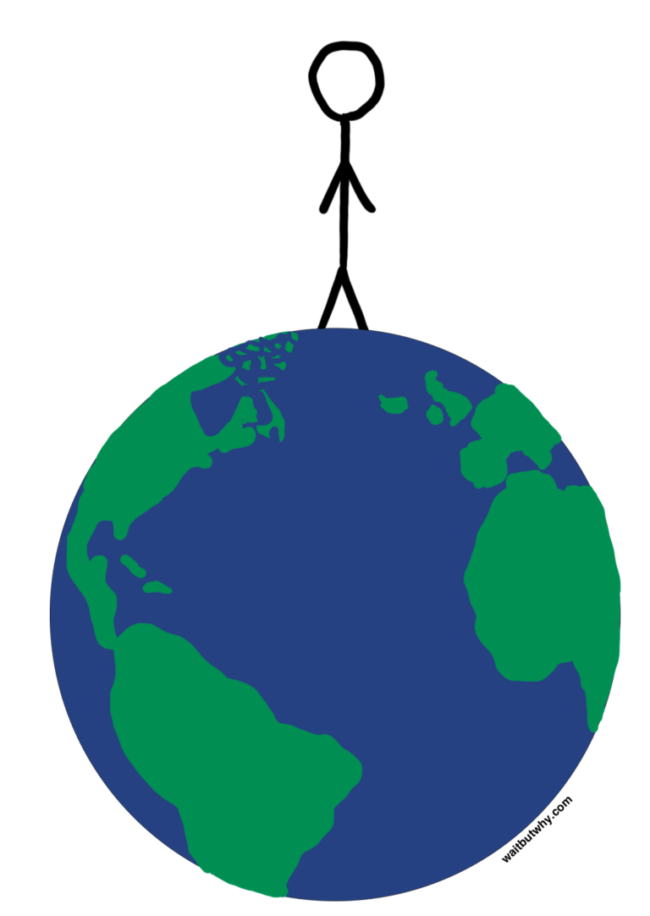
Разместив все коллективные знания человека в мозгу, Колосс Человеческий начал изобретать вещи, которые ни один человек не смог бы изобрести самостоятельно — вещи, которые показались бы абсурдной научной фантастикой людям за несколько поколений до этого.
Все это превратило наши воловьи повозки в скоростные локомотивы, а наших лошадей в блестящие металлические автомобили. Это превратило наши свечи в лампочки и письма в телефонные звонки, а фабричных рабочих — в фабричные машины. Отправило нас в небеса и космос. Заставило нас пересмотреть значение «массовой коммуникации», дав нам радио и телевидение, открыв мир, когда каждый может мгновенно достать до миллиарда человек.
Если основной мотивацией человека является передача генов, которая заставляет вид развиваться и размножаться, сила макроэкономики сделала основой мотивации Колосса Человеческого создавать ценность, а значит — изобретать новые и лучшие технологии. Всякий раз, когда это происходит, новые вещи удается изобретать все больше и все лучше.
И примерно в середине 20 века Колосс Человеческий начал работать над своим самым амбициозным проектом.
Колосс давно понял, что лучший способ создать ценность — это создать машины, создающие ценность. Машины лучше людей делают многие вещи, генерируя поток новых ресурсов, которые можно направить на создание ценности. Возможно, что еще более важно, машинный труд освободил огромные порции времени и энергии людей — то есть порции самого Колосса — чтобы те можно было отвести инновациям. Он уже передал на аутсорсинг работу наших рук машинам на фабриках и работу наших ног — машинам для езды. То же самое нужно проделать и с силой нашего мозга — что, если каким-то образом отдать на аутсорсинг работу самого мозга?
Первые цифровые компьютеры появились в 1940-х годах.
Одним из видов компьютеров для умственного труда была работа по хранению информации — они были запоминающими машинами. Но мы уже и так знали, как передавать наши воспоминания с помощью книг, равно как и что лучше использовать автомобили для передвижения, чем лошадей и собственные ноги. Компьютеры просто стали аутсорсинговым апгрейдом памяти.
Обработка информации была совершенно другой историей — типом умственного труда, который мы так и не научились пока проводить чужими силами. Человеческий Колосс всегда производил вычисления самостоятельно. Компьютеры это изменили.
Фабричные машины позволили нам отдать на аутсорсинг физические процессы — мы кладем материал, машины физически его обрабатывают и выплевывают результат. Компьютеры могли сделать то же самое с обработкой информации. Программное обеспечение было как фабричная машина для обработки информации.
Эти новые машины для хранения, организации и обработки информации оказались крайне полезными. Компьютеры стали играть центральную роль в повседневной деятельности компаний и правительств. К концу 1980-х годов среди отдельных людей стало нормой иметь собственного помощника для мозга.
И тогда случился еще один скачок.
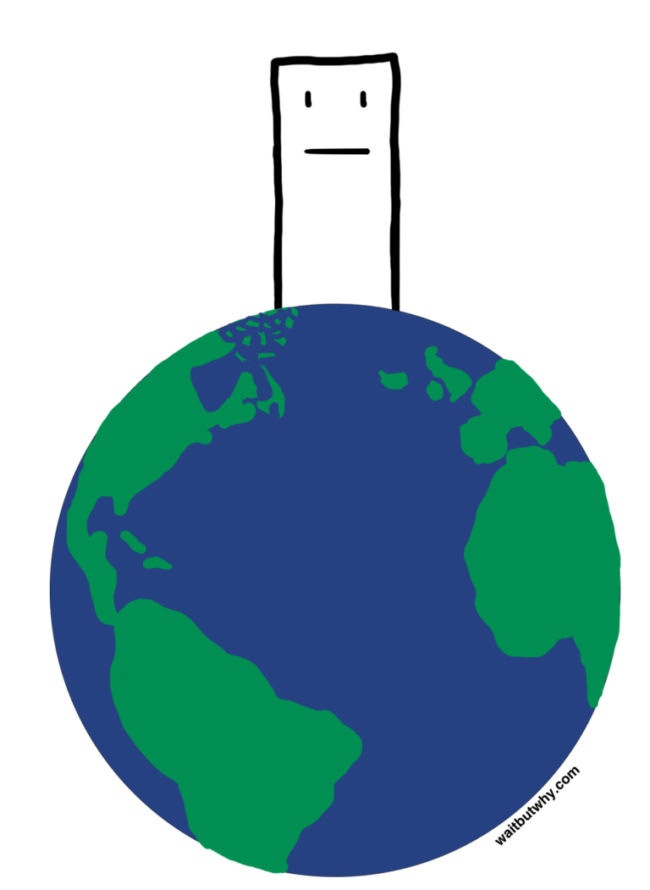
В начале 90-х годов мы научили миллионы одиноких машинных мозгов общаться друг с другом. Они образовали всемирную компьютерную сеть, и родился новый гигант — Колосс Компьютерный.
Колосс Компьютерный и великая сеть, которую он сформировал, стал как шпинат моряка Попая для Колосса Человеческого.
Если отдельные человеческие мозги являются нервами и мышечными волокнами, Интернет дал гиганту его первую полноценную нервную систему. Каждый из его узлов был связан со всеми другими узлами, и информация могла проходить через систему со скоростью света. Это сделало Колосс Человеческий более быстрым и гибким мыслителем.
Интернет позволял миллиардам людей мгновенно, свободно и легко получать доступ ко всей башне знаний человечества (которая к нынешнему моменту уже преодолела Луну). Это сделало Колосс Человеческий более умным и быстро обучающимся.
И если отдельные компьютеры служили расширением мозга для отдельных людей, компаний или правительств, Колосс Компьютерный был расширением мозга для всего Колосса Человеческого.
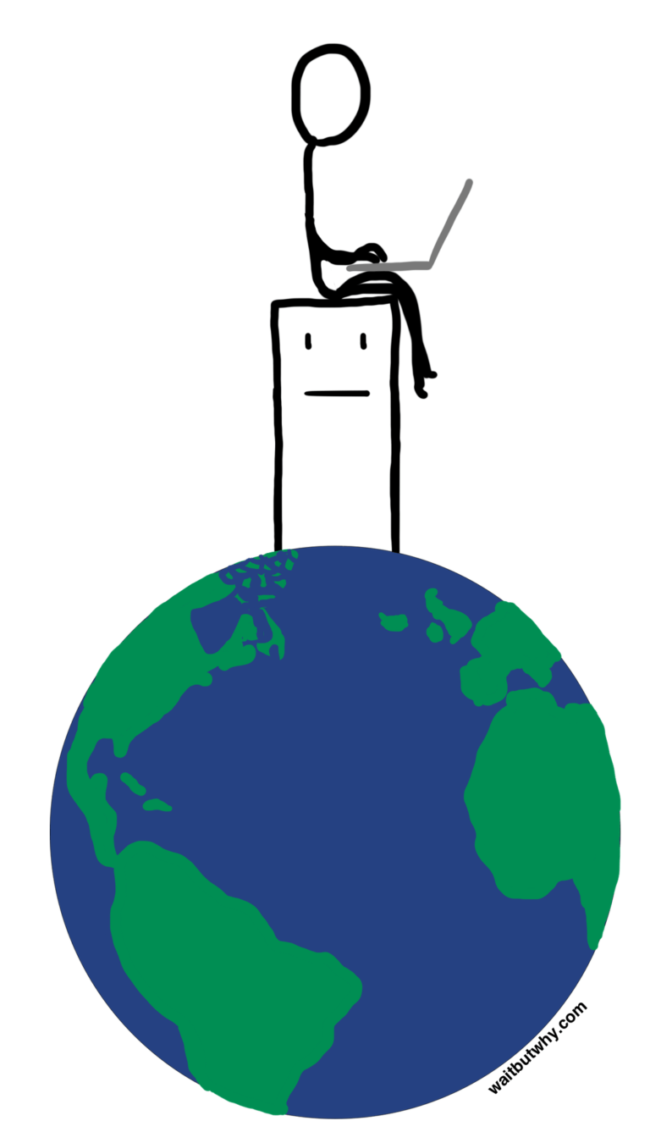
Со своей первой настоящей нервной системой, улучшенным мозгом и новым мощным инструментом, Колосс Человеческий вывел изобретательство на совершенно новый уровень — и подмечая, насколько полезен его новый компьютерный друг, сосредоточил массу усилий на совершенствовании компьютерных технологий.
Он научился делать компьютеры быстрее и дешевле. Интернет стал быстрым и беспроводным. Компьютерные чипы становились все меньше и меньше, пока у каждого в кармане не образовался мощный компьютер.
Каждая инновация походила на новый грузовик шпината для Колосса Человеческого.
Но сегодня Колосс Человеческий положил глаз на нечто большее, чем просто больше шпината. Компьютеры изменили правила игры, позволив человечеству отдать на аутсорс много связанных с мозгом задач и лучше функционировать как отдельный организм. Но есть одна вещь, который рабочие мозговые компьютеры еще не умеют делать. Думать.
Компьютеры могут вычислять, организовывать и запускать сложное программное обеспечение — ПО, которое даже может учиться само по себе. Но они не могут думать так, как могут люди. Колосс Человеческий знает, что все, что он построил, породило его умение рассуждать творчески и независимо, и он знает, что конечным инструментом расширения мозга будет тот, который действительно может по-настоящему, взаправду думать. Он понятия не имеет, что будет, когда Колосс Компьютерный начнется думать самостоятельно — когда однажды он откроет глаза и станет настоящим колоссом — но со своей основной целью — создавать ценность и доводить технологии до предела — Колосс Человеческий вознамерился это выяснить.
* * *
К этому мы еще вернемся. Сначала нам нужно кое-что научиться делать.
Как мы уже обсудили ранее, знание устроено как дерево. Если вы попытаетесь узнать веточку или листочек с темой, прежде чем у вас будет твердое основание в виде ствола дерева — понимание внутри вашей головы, у вас ничего не получится. Ветки и листья не к чему будет крепить, поэтому они просто вывалятся у вас из башки.
Мы определили, что Илон Маск хочет построить волшебную шляпу для мозга (пожалуй, «шапочку из фольги» мы вспоминать не будем — размах не тот), и понять, почему он хочет это сделать, необходимо, чтобы понять Neuralink — и понять, каким может быть наше будущее.
Но ничего из этого не будет иметь большого смысла, пока мы не погрузимся в поистине умопомрачительную концепцию о том, что это за волшебная шляпа, каково будет ее носить и как мы доберемся туда оттуда, где мы сейчас.
Основой для этой дискуссии будет понимание того, что такое нейрокомпьютерные интерфейсы (НКИ, или, как их перестают называть, интерфейс «мозг-машина»), как они работают, и на каком этапе эти технологии развиты сегодня.
Наконец, сами НКИ представляют собой только большую ветвь — но не ствол дерева. Чтобы понять, как работают НКИ на самом деле и что это такое вообще, нам нужно понять мозг. Как работает мозг — это наш ствол дерева.
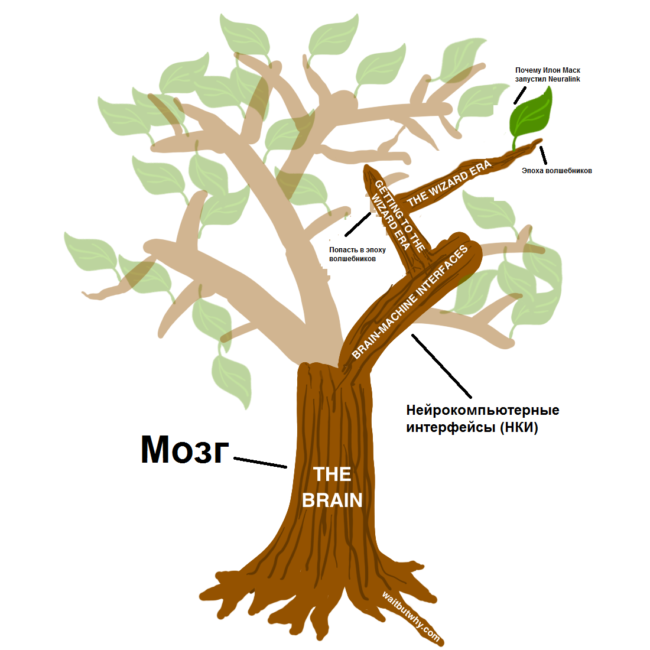
Поэтому мы начнем с мозга, он подготовит нас к изучению НКИ, они научат нас, как создать волшебную шляпу, и все это плавно перейдет в великолепную беседу о будущем. Зачем Маску волшебная шляпа? Почему она станет важнейшим элементом нашего будущего? К тому времени, как мы дойдем до конца, все встанет на свои места.
Часть 1: Колосс Человеческий
Часть 2: Мозг
Часть 3: Полет над гнездом нейронов
Часть 4: Нейрокомпьютерные интерфейсы
Часть 5: Задача Neuralink
Часть 6: Эра волшебников
Часть 7: Великое слияние
The article is based on materials .
- Get link
- X
- Other Apps
Comments
Post a Comment